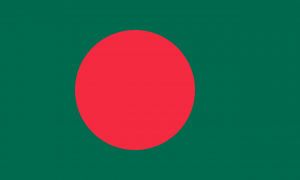Language/Bengali/Grammar/Gender
As a Bengali language teacher, I have taught Bengali grammar for 20 years. In this lesson, we will focus on identifying genders in Bengali nouns and their modifiers. This lesson is a part of the "Complete 0 to A1 Bengali Course".
Bengali Nouns
In Bengali, nouns are either masculine, feminine, or neuter genders. However, unlike English, there is no distinction of gender in words like "he" or "she."
The gender of a noun is not always determined by its biological gender. For example, "girl" is a feminine noun, but "Hijra," a community in Bangladesh, is also feminine, despite not necessarily referring to biological females.
Gender Identification in Bengali Nouns
In Bengali, nouns do not have a specific marker to indicate their gender. Therefore, identifying gender in Bengali nouns can be tricky.
However, there are some general rules:
- Most words that end with "a" are masculine. - Words that describe masculine individuals or entities are masculine nouns. - Most words that end with "i" or "shri" ("শ্রী" in Bengali) are feminine. - Words that describe feminine individuals or entities are feminine nouns. - A few words ending with "o" are neuter gender.
For example:
| Bengali | Pronunciation | English |
|---|---|---|
| রাজা (raja) | rɑdzɑ | King |
| রানী (rani) | rani | Queen |
| আম বালিশ (am balish) | am bɔlis | My pillow |
| মেয়ে (meye) | meːje | Girl |
Please note that the above rules only apply in some cases, so it's best to learn the gender of specific words.
Gender Identification in Bengali Modifiers
Bengali modifiers, such as adjectives or articles, must agree with the gender of the noun they modify.
Articles like "একটি" (ekti - a/an) and "একটা" (ekta - a/an) do not have gender, but adjectives and possessive pronouns must agree with the gender of the noun that they modify.
For example, "মটরশুটি (motorshuti - motor car)" is a feminine noun. Therefore, "আমার নতুন মটরশুটি সুন্দর" (Amar notun motorshuti sundor - My new motor car is beautiful) is correct, but "আমার নতুন মটরশুটি সুন্দর (Amar notun motorshuti sundor - My new motor car is handsome) is not correct because "sundor" is a feminine adjective.
Exceptions
Exceptions exist for some words that do not fit the rules mentioned earlier. For instance:
- "লিঙ্গ" (lingo) meaning gender, is a neuter gender word. - Some words are common gender like "মানুষ" (manush - human) that can be either masculine or feminine.
Conclusion
Understanding the gender of Bengali nouns and their modifiers is essential in forming correct sentences. Knowing the gender of a word will help learners use adjectives and pronouns correctly. As a beginner, it's best to focus on learning words and genders together.
In the next lesson, we will learn about plural nouns in Bengali.
Related Lessons
- Types of Adverbs
- How to Use Have
- Temporal Prepositions
- Directional Prepositions
- Plurals
- Negation
- Future Tense
- Question Words
- Comparison
- Adjectives


